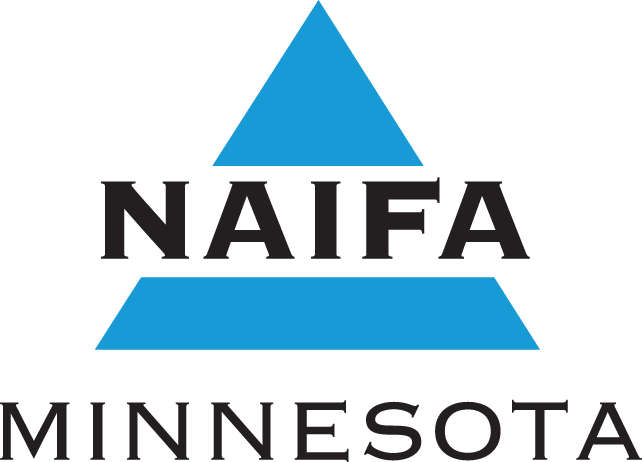Valued Clients, while many of you watched the election returns in real time, below are the facts of the outcome, what it means for the 2023 legislature and why things happened as they did, at least in my humble opinion.
Federal Outcome: Minnesota had no U.S. Senate seats up for grabs, while all 8 House seats were on the ballot.
Seven of those races weren’t competitive, seeing all 4 GOP seats (1,6,7,and 8) won handily while 3 DFL*seats were retained (3,4,5).
(* Here in MN, we refer to the Democrats as the “Democrat, Farmer, Labor Party (DFL.))
The one competitive seat, CD 2, was retained by DFL incumbent Angie Craig.
Thus, MN will return a 4/4 House delegation to Washington.
Constitutional Offices:
Governor Tim Walz was re-elected by approximately 8 points. While Scott Jensen, the GOP nominee, outperformed the 2018 GOP gubernatorial candidate in many rural areas, Walz ran up the score in the Metro in a race that turned out as expected.
The Attorney General race was much closer, but incumbent DFL AG Keith Ellison retains his office with a narrow 1-point win.
DFL Secretary of State Steve Simon won re-election with a comfortable 55-45% win.
DFL State Auditor Julie Blaha barely won re-election with a 47.47% to 47.13% win.
Minnesota Senate: The Senate flipped from GOP to DFL control by the narrowest of margins. The DFL has the majority by one seat, 34-33.
Minnesota House: The House remained in DFL hands, featuring a 70-64 majority.
What it Means: The DFL will control the legislative and executive branches. While it may be tempting to believe that this will usher in a period of unrestrained progressive law making, I don’t believe that will happen.
The 34-33 Senate make up will certainly temper that tendency, as will the narrow House majority.
For example, two of the DFL senate seats represent rural areas that are social conservative, with senators who are freshmen who won fairly tight races.
The House majority of six seats is quite narrow as well. With next year being a budget year, these small majorities will likely find it difficult to get the basics done, much less more ambitious issues.
That certainly doesn’t mean that some of these issues won’t be raised and debated or even passed. It’s simply the reality that once the glow of victory wears off, the task of governing arises.
I was a part of the 68-66 House majority in 2005-2006. Every vote was painful and required threading the needle of various demands from every faction and disgruntled Colleague.
Minnesota’s massive budget surplus may buy some peace, but one has to wonder what the surplus will look like in February 2023, when MMB issues the budget forecast that will serve as the basis for 2023 fiscal legislation.
My view is that there will be a lot of dreaming among DFL legislators in January that will become hard reality by May. Governing is hard for any majority, but it’s especially hard when that majority is narrow and there is no opposition foil to unite the team.
As a new legislator back in 2003, I learned the very hard lesson that your biggest legislative opponents are frequently found on your own team.
Why? Without question, this was the most bizarre election outcome in my 34 years of political involvement. The outcome versus the expected outcome was turned on its head.
Candidate Quality. GOP Gubernatorial candidate Scott Jensen is rightly receiving criticism this morning for running a poor campaign. The concerns of many Republican donors and activists were realized during the campaign.
There were too many unforced errors and a lack of message discipline.
A better candidate may have pulled the AG and Auditor candidates over the line, as well as produced narrow legislative majorities for the GOP, much like Governor Dewine is credited for pulling JD Vance over the finish line in Ohio.
This outcome is a fresh invitation for the MN GOP to abandon the caucus system and go to a primary, where a wider, more representative base of party faithful can participate in the endorsement process.
Political Balkanization. While the criticism of Jensen is justified, there will be a temptation to lay all blame at his feet and walk away. That would be a mistake. In my view, the primary takeaway is the very troubling development of hardcore political Balkanization reaching Minnesota.
There is a vast block of voters who went to the polls simply to vote for the red or the blue team regardless of facts, atmospherics, candidate quality, or the issues in controversy.
We have entered an era of fact-free politics, where many voters seek information bias, as they access media platforms and data that will merely confirm their preconceived notions. These voters have their minds made up long before election day, regardless of what transpires during the campaign.
Campaigns reinforce this behavior because it works. The new template is to drive base turnout by demonizing opponents, inflaming issues with outrageous rhetoric, and evading accountability by ducking debates, town halls, and other uncontrolled environments where the candidate may be asked difficult questions.
The proof is in the numbers. A whopping 66% of Minnesota legislative candidates won their race with more than 60% of the vote. That’s unprecedented in Minnesota, and simply stunning. Moreover, 12% didn’t even have an opponent. I see this as a trend, not an anomaly. Moving forward, most legislative districts won’t be competitive, with only about 25-33% of the seats competitive.
Thus, the legislature becomes like Washington, with too many legislators having little incentive or reward for compromising. Compromise becomes dangerous, as those who stray from orthodoxy become targets for a primary. Style replaces substance. Social media presence becomes paramount. Legislating becomes secondary.
This assessment is pessimistic, I know, but it’s my heartfelt belief. We’re in for a rough period of governing, as Minnesota requires a budget and a balanced one at that. At some point, the legislature and governor must govern.
A Plan. It isn’t enough to point out that your opponent is failing. You also need to articulate your plan, what you intend to do differently to address the problem.
Simply put, Minnesota Republicans pointed out the DFL flaws, but didn’t present a coherent plan for fixing the problems.
This is part and parcel of my aforementioned lack of message discipline. It’s not enough to say, “I won’t do that.” What will you do? The metrics all say that many voters are unhappy with DFL policies. That didn’t translate into success for the GOP because they didn’t offer an alternative.
Polling is Obsolete. One of the difficulties regarding the campaign cycle is that there is little information available to us regarding the state of races prior to the election.
Fundraising, reports from the field, and polling are some of the tools we access to get a read on things.
It’s clear that polling no longer works. Technology has made the trusted land line telephone obsolete. Our smart phones now allow us to screen out the unfamiliar and unknown callers, texters, and emailers.
People likely to respond to text invitations from pollsters are probably not representative of the electorate. It’s nearly impossible for pollsters to get that good, representative sample they need.
More importantly, polling is underpinned by turnout assumptions. Pollsters can’t reliably know who will show up to vote anymore. They can’t reach most voters.
The polling conditioned us to expect certain outcomes. For about the 4th election in a row, the polls (in the aggregate) got it very wrong. Our weather forecasters are more accurate.
Social Media is Fake. This was a reminder that social media isn’t real. It’s a minority of Americans who scream very loudly. For the political class, we all spend too much time on Twitter and other platforms, which shape our perceptions and viewpoint regarding campaigns and races.
The vast majority of voters don’t post and they don’t broadcast their thoughts.
When you consider that many voters don’t even answer the door anymore (thanks to Ring and other technology), there is very little anymore that tells us where races stand on any given day.
As always, please send your thoughts or questions my way. The work of fashioning a legislative agenda now begins, as we are less than 60 days from the convening of the 2023 legislative session.
NAIFA-Minnesota Lobbyist, Christopher J. DeLaForest
DeLaForest Consulting








